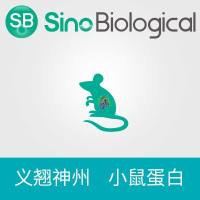Genetic Construction, Expression, and Characterization of Diphtheria Toxin-Based Growth Factor Fusion Proteins
互联网
互联网
相关产品推荐

EGF重组蛋白|Recombinant Mouse EGF / Epidermal Growth Factor Protein (Fc Tag)
¥580

Recombinant-Drosophila-melanogaster-CAAX-prenyl-protease-2SrasCAAX prenyl protease 2 EC= 3.4.22.- Alternative name(s): Farnesylated proteins-converting enzyme 2; FACE-2 Prenyl protein-specific endoprotease 2 Protein severas
¥11466

Shiga toxin II subunit B 兔多抗 | Enterohemorrhagic E. coli (EHEC) stx2B Antibody, Rabbit PAb, Antigen Affinity Purified
¥800

RSV Fusion重组蛋白|Recombinant Human RSV Fusion protein/RSV-F(Strain RSS-2)Protein(His Tag)
¥2310

Recombinant-Saccharomyces-cerevisiae-Altered-inheritance-of-mitochondria-protein-11AIM11Altered inheritance of mitochondria protein 11 Alternative name(s): Genetic interactor of prohibitins 8
¥9996

